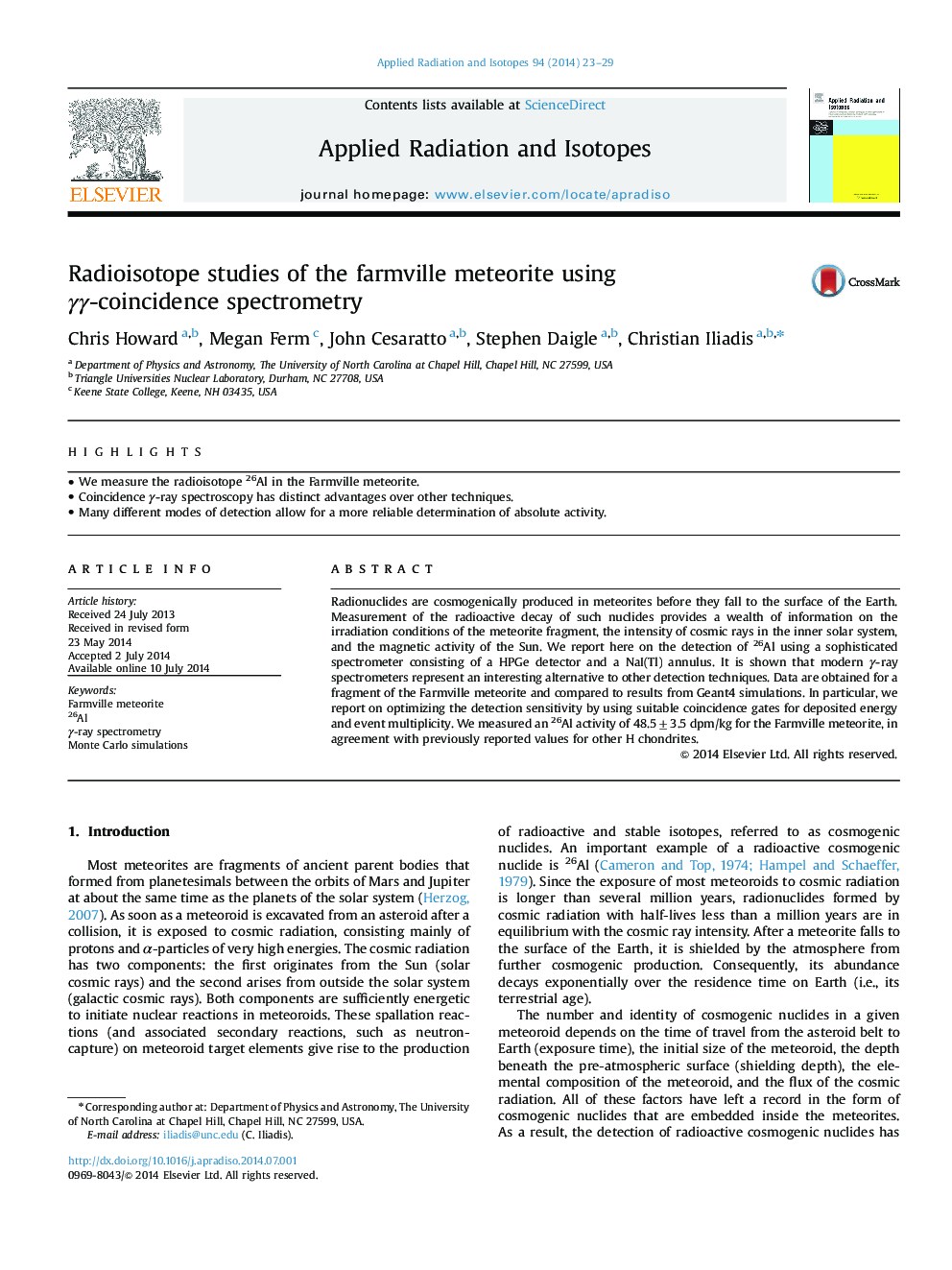| Article ID | Journal | Published Year | Pages | File Type |
|---|---|---|---|---|
| 8210102 | Applied Radiation and Isotopes | 2014 | 7 Pages |
Abstract
Radionuclides are cosmogenically produced in meteorites before they fall to the surface of the Earth. Measurement of the radioactive decay of such nuclides provides a wealth of information on the irradiation conditions of the meteorite fragment, the intensity of cosmic rays in the inner solar system, and the magnetic activity of the Sun. We report here on the detection of 26Al using a sophisticated spectrometer consisting of a HPGe detector and a NaI(Tl) annulus. It is shown that modern γ-ray spectrometers represent an interesting alternative to other detection techniques. Data are obtained for a fragment of the Farmville meteorite and compared to results from Geant4 simulations. In particular, we report on optimizing the detection sensitivity by using suitable coincidence gates for deposited energy and event multiplicity. We measured an 26Al activity of 48.5±3.5 dpm/kg for the Farmville meteorite, in agreement with previously reported values for other H chondrites.
Related Topics
Physical Sciences and Engineering
Physics and Astronomy
Radiation
Authors
Chris Howard, Megan Ferm, John Cesaratto, Stephen Daigle, Christian Iliadis,
